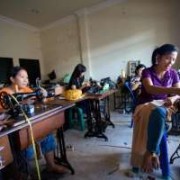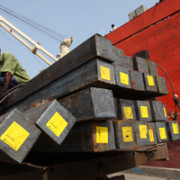Tag Archives | Southeast Asia
Economics, Social development and protection
 Climate change, Energy, Finance sector development
Climate change, Energy, Finance sector development
 Governance and public sector management
Governance and public sector management
 Finance sector development
Finance sector development
 Regional cooperation and integration
Regional cooperation and integration

Supporting the creative economy for sustainable development in Southeast Asia

Many efforts have been made in Southeast Asia to support creative industries and boost the creative economy, realizing the ability of knowledge-based economic activities to foster income generation, job creation, and export earnings while promoting social inclusion, cultural diversity, and human development (UNCTAD 2010: 10).
Green bonds show promise for financing energy-efficient buildings in Southeast Asia

The member countries of the Association of Southeast Asian Nations (ASEAN) have been experiencing a surge in energy demand due to their growing populations, expanding economies, and rising living standards. One reason for this rising energy demand is increased activity in the building and construction sector.
Law, culture, and innovation

Many aspects of motivating innovation are painfully obvious, but much research on the topic is segmented depending on the particular issue of interest and the available data for examining that issue.
4 ways to boost SME access to finance from commercial banks in ASEAN

Concerns about moderating economic growth and rising income inequality in ASEAN economies have brought small and medium-sized enterprises (SMEs) into the policy limelight. Arguing that SMEs have significant potential for creating jobs, some commentators are suggesting a host of industrial policies such as financial subsidies and local content rules to promote SMEs. However, government failure may result from heavy-handed state intervention for SMEs.
Potential gains from closer cooperation between South Asia and Southeast Asia

South Asian and Southeast Asian economies have all embraced an outward-oriented development strategy, albeit to different degrees. The result has been an impressive increase in international trade, foreign direct investment (FDI) inflows, and significant productivity improvements, which in turn have contributed to important socio-economic gains. Indeed, some of these economies have delivered among the most striking economic performances in the world.


Search
Subscribe / Connect to Asia Pathways
Subjects
- Accelerating Progress in Gender Equality
- Addressing Remaining Poverty and Reducing Inequality
- Agriculture and natural resources
- Capacity development
- Climate change
- Economics
- Education
- Energy
- Environment
- Finance and Innovation
- Finance sector development
- Gender
- Globalization and Economic Stability
- Governance and public sector management
- Health
- Industry and trade
- Information and Communications Technology
- Infrastructure
- Making Cities More Livable
- Miscellaneous
- Population
- Poverty
- Private sector development
- Regional cooperation and integration
- Sanitation
- Social development and protection
- Strengthening Governance and Institutional Capacity
- Subjects
- Transport
- Uncategorized
- Urban development
- Video Blog
- Water
Recent Posts
- From Crisis to Resilience: The Evolution of the Banking Sector in Asia and the Pacific
- Tariffs on the Table: What Could Be Asia’s Next Move?
- Investing in Childcare a Win for Women and the Economy
- Flush and Flourish: Upgraded Toilets Can Transform Lives in Rural Asia
- New Ways for Climate Finance and Development in Asia and the Pacific




Recent Comments